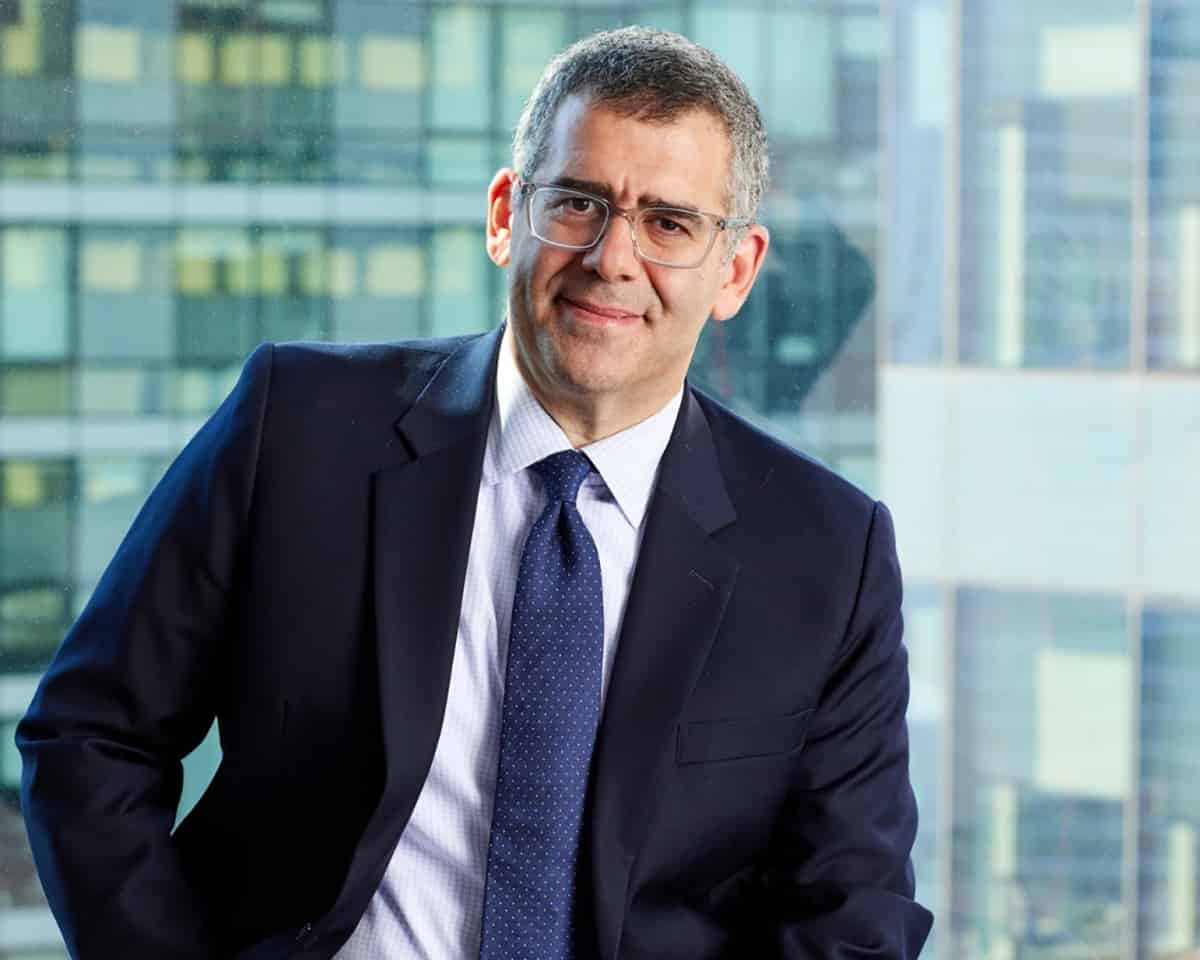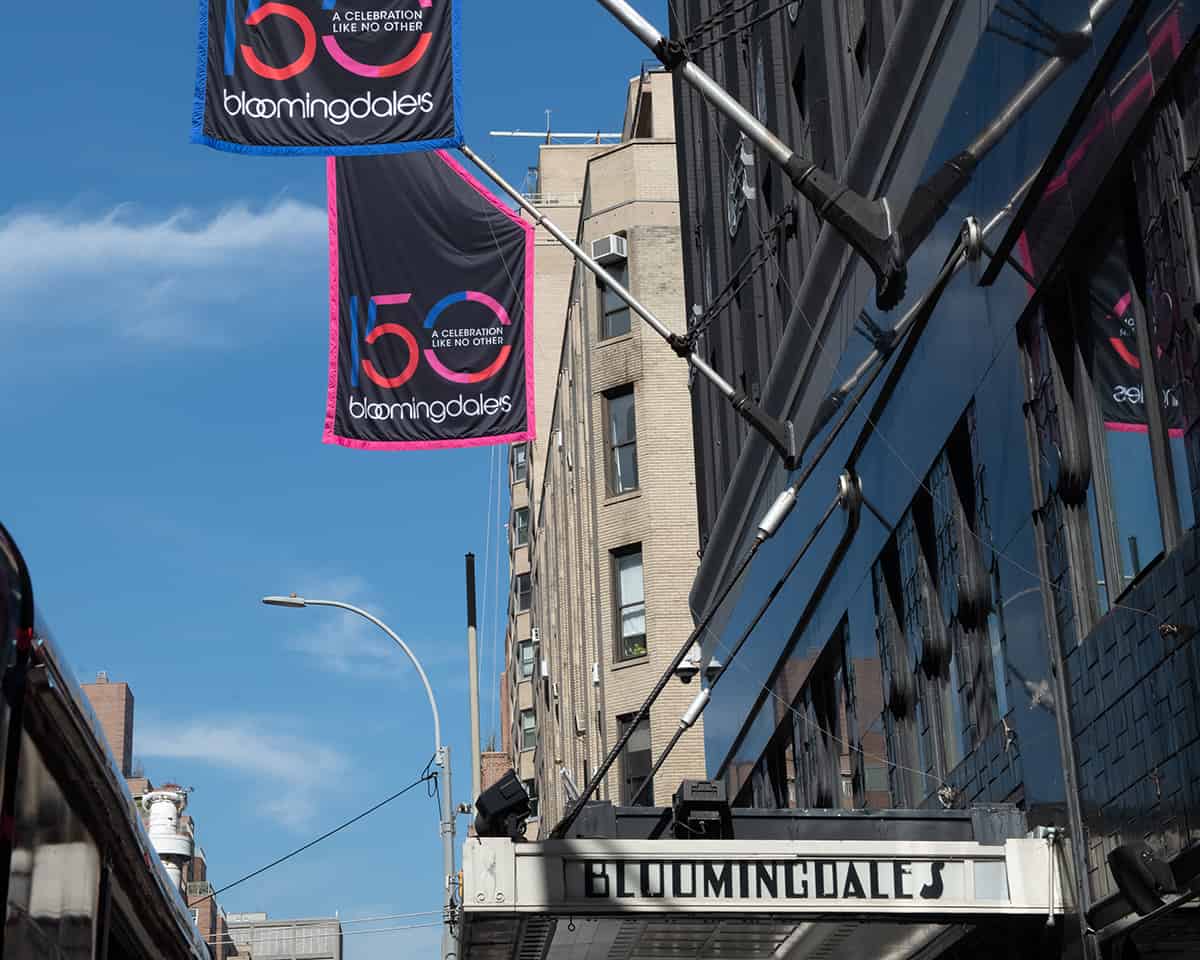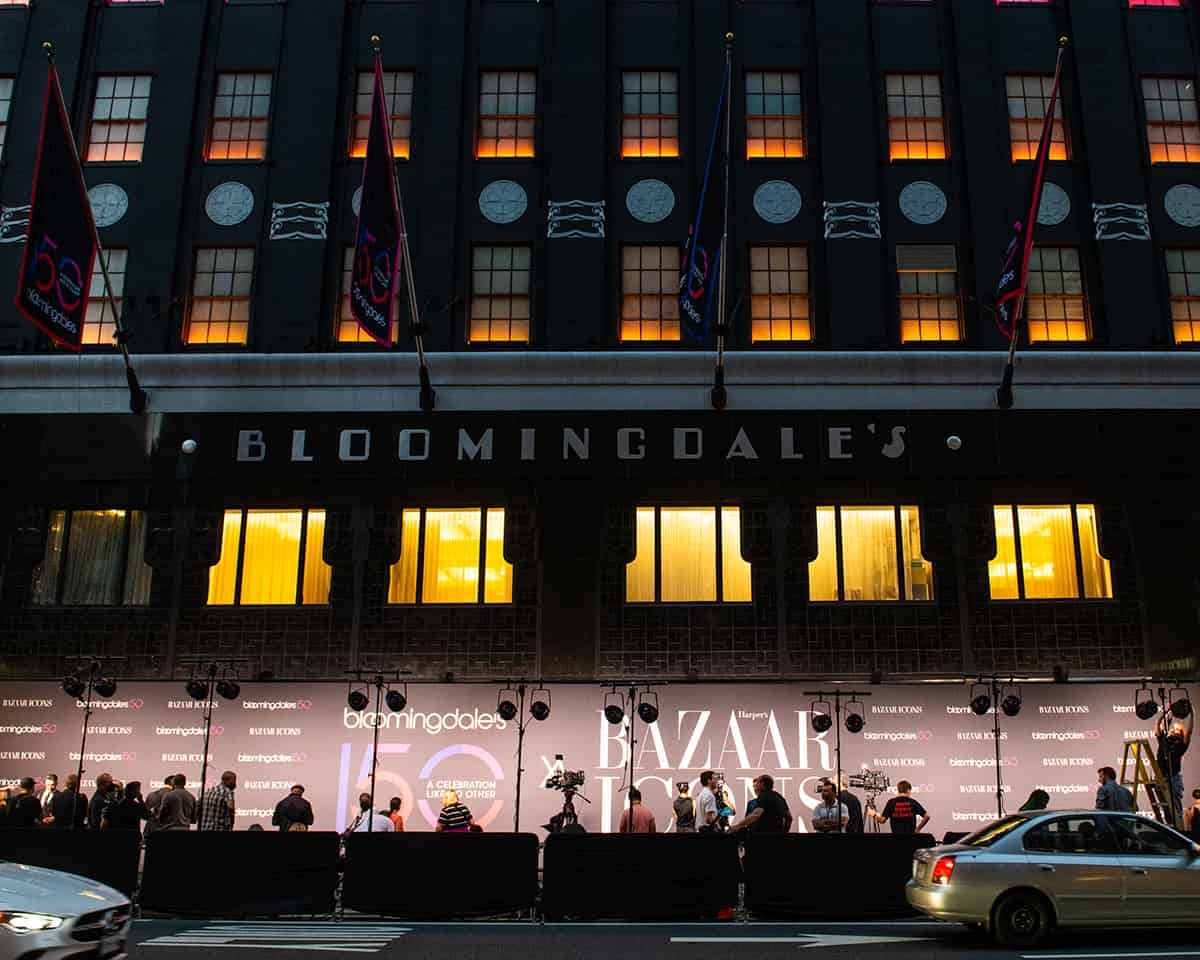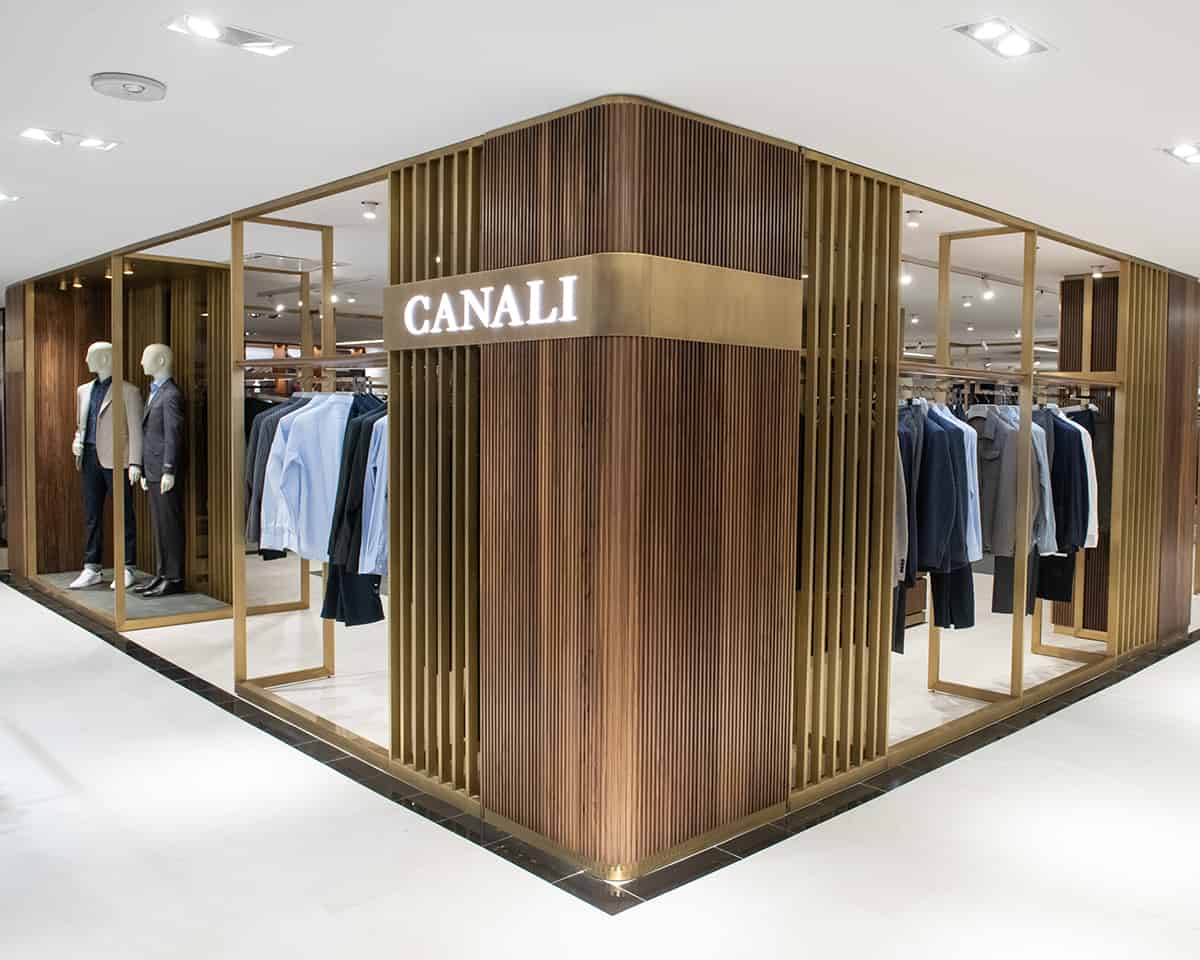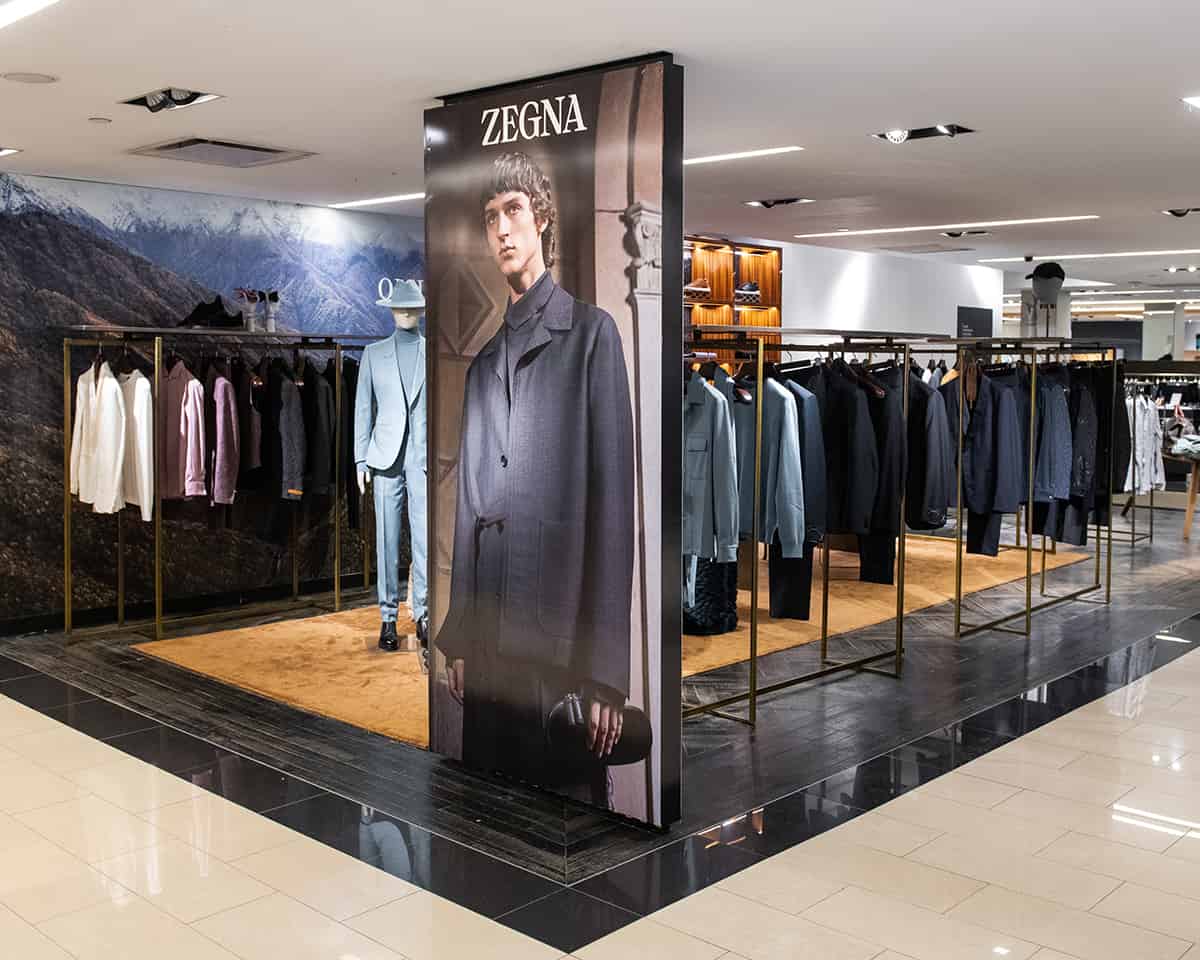BLOOMINGDALE’S AT 150: FROM A MOMENT TO A MOVEMENT

If you haven’t already gotten your copy of MR Magazine’s January 2023 issue, never fear! We’ll be posting every article right here on MR-mag.com over the next week or so. You’ll also be able to pick up a copy at most of the menswear trade shows coming up in January, but be sure that we have your name on our mailing list for future issues by completing the form at the link here.
“Like no other store in the world” has been its slogan for decades. Having just celebrated its first century and a half in business, EVP/GMM Dan Leppo reveals how Bloomingdale’s stays “of the moment” and attempts to articulate the magic of this special store.
What, in your opinion, makes Bloomingdale’s like no other store?
The first factor is the people: we’re blessed with the most gifted and passionate individuals in the world. Based on a reputation that attracts top talent, coupled with an exceptional training program, we’re able to go out and find them, to nurture and build them. We put tremendous effort and energy into building great people.
Number two: We’ve amassed a following of customers who hold us to the highest standards of being “of the moment,” allowing us to play in many different arenas. It’s certainly about fashion but it’s also about popular culture, e.g., our partnership with the TV phenomenon Bridgerton this past year. The connection to popular culture is a key part of the energy you feel in our stores.
My hope for the next 150 years is that we continue to be “of the moment,” playing in the zeitgeist of whatever is resonating in our customers’ minds at that moment. You know, I came into the business well before the internet at a time when specialty stores were predicted to be the death of department stores (even before the internet was predicted to be the death of department stores). But if you’re a monolithic specialty store with a focused point of view and the fashion direction moves against you, it’s very hard to pivot. If you’re a department store with broad assortments, with the ability to get inside the customer’s head and the agility to move left or right, up or down, you can pivot as needed. It’s like the old saying in hockey: “Pass the puck to where the players are heading, not to where they are now.”
So where is men’s fashion heading? What’s the most exciting change in menswear?
The most exciting change is that men are more engaged in how they put themselves together than at any prior time, certainly in my career. And instead of business and leisure wardrobes being two separate monolithic concepts, it’s become a very fluid blend.
Where we’ve spent enormous energy and effort is in building a broader, more diversified offering in tailored clothing, reflecting this new fluidity. Our focus on nested suits includes more color, texture, and pattern. We emphasize a third layering piece, be it a great sportcoat or Harrington jacket. Elevated sportswear components like cashmere knits and beautiful linens have a definite place in this new hybrid wardrobe.
What was your most recent personal purchase in menswear?
I’d rather not play favorites among our apparel brands, but fortunately, I don’t have to. Truth is that just this past Saturday, I bought an incredible umbrella from a British brand we carry, Fox Umbrellas, crafted in London. It’s a plaid umbrella with a briarwood handle, a true work of art.
And your business wardrobe consists of what these days?
I almost always wear a jacket or sportcoat. I’m comfortable mixing sportcoats with jeans, a polished cardigan, a dressier Harrington or some kind of lightweight jacket. I’m the guy who never gets on a plane without a sportcoat—both for the polish and for the pockets for somewhere to put my stuff!
How did Bloomingdale’s menswear fare during the pandemic? How have the past three years changed your product mix and/or the way you do business?
Business these past three years has been a roller coaster. There were certainly times when we got monolithic in what we sold. At the height of the pandemic, business was loungewear-based. Then it was streetwear-based or logo-based. But through it all, we tried to maintain a balanced offering. We spent much energy and effort finding the right mix.
We also took several risks. For example, at the height of Covid, we brought in Zegna. Then nine months into the pandemic, we brought in Tod’s. Then toward the end, we brought in Boglioli and Peter Millar. At the same time, we doubled down on Rag & Bone and continued to build Helmut. In other words, we used the moment to bring in brands that we believed would prove important to us in the long run. This was risky because, for example, at the moment we brought in Tod’s footwear, men were wearing sneakers and pool slides. But as we moved into a different cycle, Tod’s became a great resource for moc-style shoes.
But beyond specific product, Covid brought us the realization that we could become more agile. My hope is that we hold on to this agility so we can continue to react closer to the hilt. Clearly, in a world of social media, customers are evolving more quickly than ever. Information travels at lightning speed, and that information influences what customers want to buy.
Will this ultimately mean more markdowns?
Not necessarily. We hold on to liquidity so we have the financial means to react to what’s happening in the business. We’re fortunate to be part of a bigger corporation that makes this possible. We acknowledge mistakes quickly; we move through slow-moving product quickly, leveraging our own outlets to do this. We believe in taking ownership of our business.
How problematic have supply chain slowdowns been for you?
To some degree, it’s been feast or famine, but as merchants, we rely on our partners in the market to collaborate closely on how we can get the best possible assortments in the moment for our customers. And fortunately, certain moves we made during the pandemic greatly benefited us during the worst supply chain backlogs.
For example?
For example, early in the pandemic, we maintained our commitment to tailored clothing. We decided that our tailored business had very little wrong with it; the problem was, quite frankly, lack of demand, especially during the front half of 2020. So we held on to core items and fashion pieces: instead of taking them out of the mix, we just waited. We’re fortunate that, as part of Macy’s, we had the financial coverage to bring in receipts as business returned.
As another example, I didn’t markdown Canali, a special brand for us since we were the first store in the U.S. to carry it. I worked it out with Giorgio that we’d hold hands together and wait. And when the business bounced back, as it did in May/June 2020, we had the right inventory while our competition had cut tailored from two-thirds of their doors.
What’s selling best now in menswear?
The momentum for the past year has been in the classic, dressier end of sportswear. Guys are going to the office, to meetings, to restaurants. There’s a shift from classic suits (still selling for weddings and events) to elevated sportswear with perhaps a tailored jacket or more interesting trouser or lace-up oxford instead of sneakers. This more polished look has been strong for a while.
Your new footwear floor looks amazing!
I’ve known Louis [DiGiacomo] for so many years, and when I saw the fabulous shoe floor Saks opened at its flagship, I was determined to one-up it.
How will your customers react to the notable price increases they’ll encounter for fall ‘23?
Although we’re fortunate to have customers with financial elasticity, we realize that people at all levels are feeling the pinch to varying degrees. I mean, they look at their 401Ks and they don’t feel so great. We seek out product with perceived value, which does not necessarily mean inexpensive. Perceived value could be a Canali suit, a Zegna cashmere knit, an Italian linen shirt. Our customer expectations are extremely high, so we focus on great value, not low prices.
How does the current political divisiveness in our country and the troubled state of the world impact what you do?
On a personal level, it all weighs on me. But I believe that as retailers, we can’t dwell on what we can’t control. Our job is to offer customers product that excites them, service that engages them, and experiences that become memorable, inspiring them to shop. I can be personally distraught about what’s happening in the world, but I can’t let it distract my team from their focus: finding product that’s more fabulous than ever, marketing that engages like never before, and events that delight and inspire.
It seems you’re doing plenty of events to celebrate 150 years.
We are. The best part of this anniversary is that it allowed us to wrap our arms around our customers in new ways. For example, we partnered with our friends at Ralph Lauren and — with our leadership teams, some of Polo’s professional and Olympic athletes, and many of our best customers — took over the Polo Bar. It was a wonderful experience for our customers and great for our relationship with the Ralph Lauren organization. They saw the power of our shared customers, and we realized that there’s more of this that we could be doing as we aspire to turn 150 years from a moment into a movement. The anniversary has put a spotlight on our longevity and relevance.
Could you talk a bit about your online business?
We don’t share numbers, but the web has become our most significant selling location. So, we’re certainly focused on it, but it’s more about how do we meet the customer where the customer wants to shop: in-store, online, or some hybrid thereof. It’s also about inserting humanity into the digital experience.
And for this we have a great playbook: if you look at our bridal registry, it all starts online, but then we bring in a registry consultant to work with the couple. Where we do that, the couple inevitably chooses to register for a more significant spend because we add value. For example, if they register for 12 plates, we’ll suggest 14 so that down the road when a few break, they’ll have replacements that may no longer be available from the maker.
We certainly want them to spend more with us, but we also want their friends to shop with us, so the shopping experience must be beyond exceptional.
Could you discuss the new Bloomie’s concept, your move to smaller stores? Over the years, I have asked people how many stores they think Bloomingdale’s has. The response I typically get is somewhere around 100. We actually have 30 full-line stores and 20 outlets. We believe we have a true opportunity to expand our footprint but not necessarily with 150,000-square-foot stores.
We opened our first smaller-format (25,000 square feet) Bloomie’s store in Fairfax, Virginia. We already had great full-line stores in Tysons Corner and Chevy Chase, Maryland, but we wanted a local lifestyle center with high repeat business and same-day delivery in the trading area. It also drives much ecomm business. Our second Bloomie’s is a 50,000-square-foot store in Skokie, Illinois. Next, we’ll be filling in our map by opening in markets we’re not yet in—and there are many!
With more than 200 menswear brands, you’re probably not seeking out more. So how does an emerging brand approach you for consideration?
We always want to view what’s out there; we’re always looking for the next big thing. We have a robust merchant organization and a fashion office whose job it is to look at new collections. And we’re not so hard to reach: Anyone on LinkedIn can find contact info for me and my teams. We’re also at many of the trade shows.
So having a conversation with us is not the hard part; the hard part is exciting us with product we don’t already have, something that brings a new lens onto the selling floor. To become part of our mix, it’s always about great product that will excite our customers and that’s not already duplicated in our assortments.
What’s the biggest mistake you’ve made in terms of selecting product?
On private brands, especially European brands, I’ve jumped in too quickly without considering all implications and logistics. At times, I brought in the right look but not the right fit. Or in the case of a collection, I lacked the wherewithal to bring in all the pieces at the same time for maximum impact on the selling floor. My job is to get it right more than I get it wrong, but I’m likely to get it wrong plenty of times. That said, you can’t be afraid to get into the batter’s box and swing!
What can your vendors do to make your life easier? (much laughter at the question)
As a retailer, I apparently spend much time making vendors’ lives difficult so I’m not all that comfortable asking them to make mine easier!
But seriously, what I need from the market is: 1. Creativity; 2. Ingenuity; and 3. Execution. I’ve been doing this for a long time, and I feel it’s my job as a partner to give genuine feedback, to articulate our goals and challenges with clarity upfront so that our partners can choose to participate in the solutions or not.
What keeps you up at night?
Holding on to our relevance. It’s largely the push and pull of accomplishing short- versus long-term goals. While we’re always comparing business to last year, I want to make sure my team has enough of a forward view, with one foot in the past and one building our future.
I’m lucky enough to work at a store where I stand on the backs of giants: great merchants like Marvin Traub, Mike Gould, David Fisher (who built our reputation in men’s), and now Tony Spring. All those who came before left this wonderful legacy that I get to capitalize on. Before I became GMM when I worked with David, he would often say, “Never let it be said that the best times at Bloomingdale’s were under my watch; that’s your job now.” And now that I’m in the late fall of my career (after all, MR gave me a Lifetime Achievement Award several years back), I say the same to my teams. Building and inspiring the next generation of Bloomingdale’s execs, creating concepts that have the same gravitas with customers as those from our past, that’s their job now, and that’s how we’ll hold on to our relevance.


